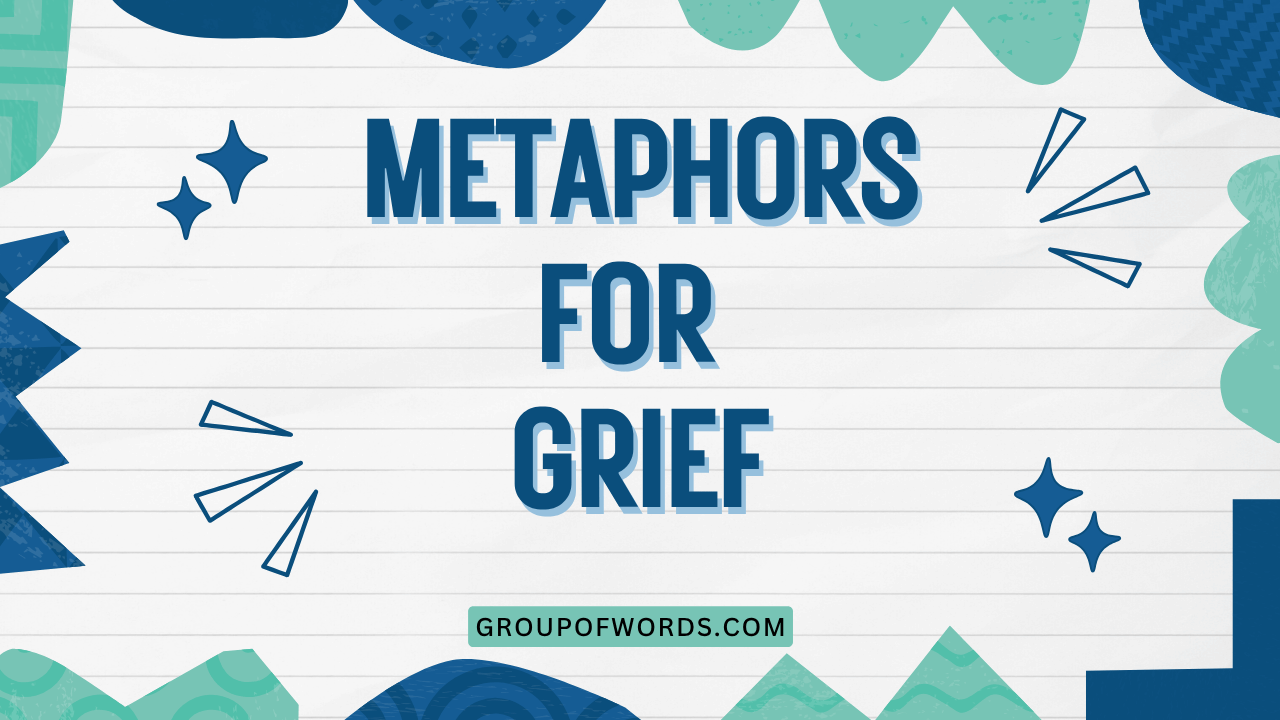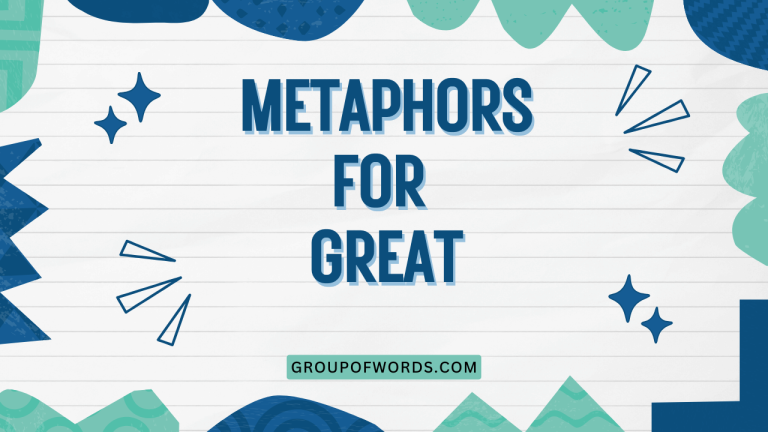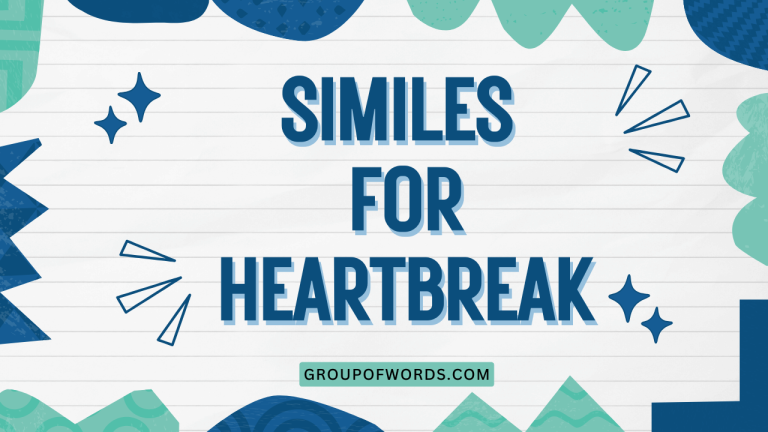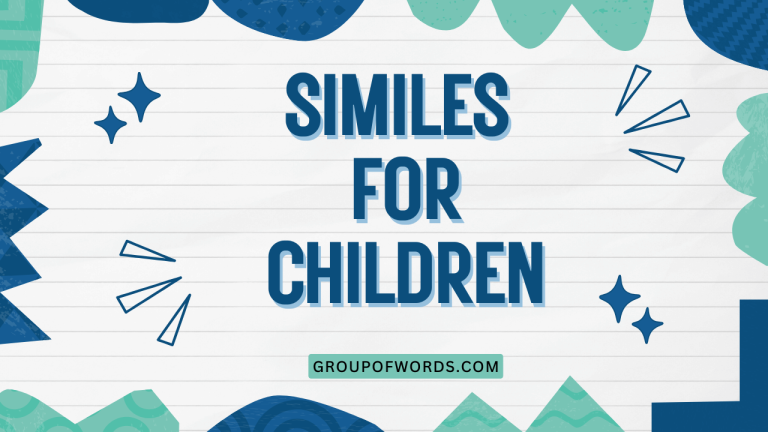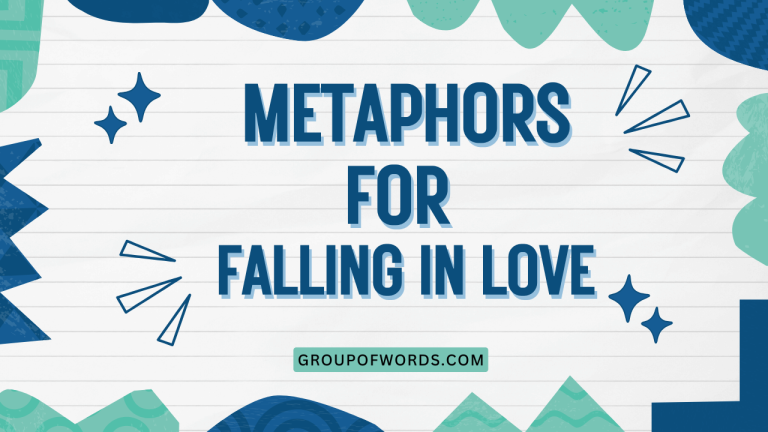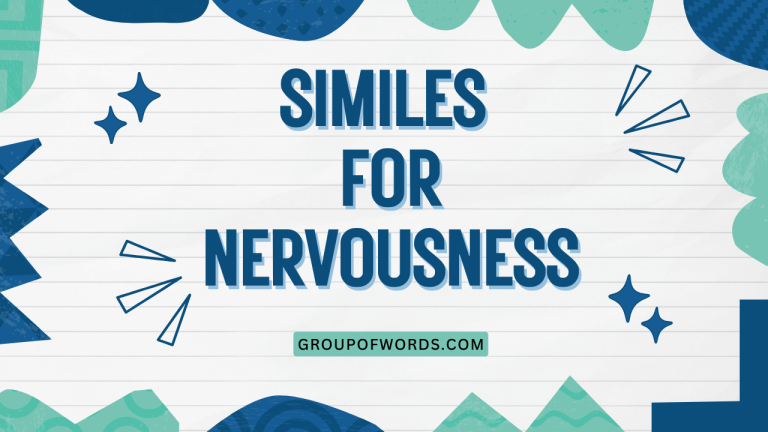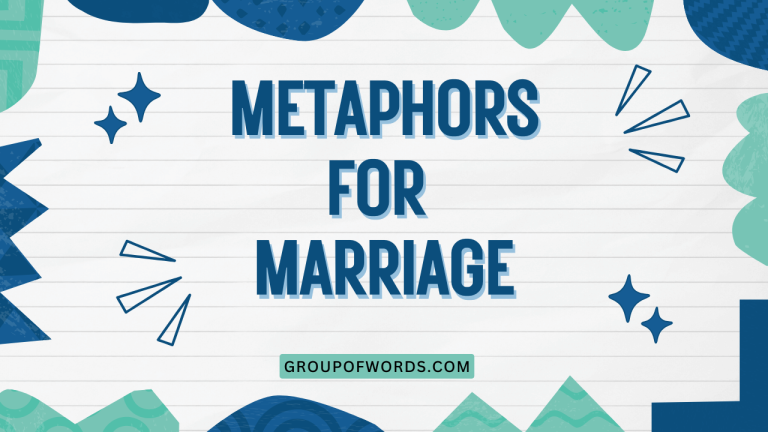Navigating Sorrow: Understanding Metaphors for Grief
Grief is a profound and universal human experience, yet it remains deeply personal and often difficult to articulate. Because direct language often falls short, we frequently turn to metaphors to express the complex emotions and sensations associated with loss.
Understanding these metaphors not only enriches our comprehension of grief but also enhances our ability to communicate with empathy and sensitivity. This article explores the diverse range of metaphors used to describe grief, providing a comprehensive guide for anyone seeking to better understand and navigate this challenging terrain.
Whether you are a student of language, a mental health professional, or simply someone seeking solace and understanding, this guide will equip you with the tools to recognize, interpret, and appreciate the power of metaphorical language in the context of grief.
Table of Contents
- Introduction
- Defining Metaphors for Grief
- Structural Breakdown of Grief Metaphors
- Types and Categories of Grief Metaphors
- Examples of Grief Metaphors
- Usage Rules for Grief Metaphors
- Common Mistakes When Using Grief Metaphors
- Practice Exercises
- Advanced Topics in Grief Metaphors
- Frequently Asked Questions
- Conclusion
Defining Metaphors for Grief
A metaphor is a figure of speech that directly compares two unlike things without using “like” or “as.” It asserts that one thing *is* another, creating a vivid and often insightful connection. In the context of grief, metaphors serve as powerful tools for expressing the inexpressible. They allow us to articulate the complex emotional, psychological, and even physical sensations that accompany loss by drawing parallels to more familiar or tangible experiences. These metaphors aren’t merely decorative; they actively shape our understanding and perception of grief.
Metaphors for grief can be categorized based on the concepts they draw upon. They function by transferring qualities and characteristics from the source domain (e.g., a journey, an illness) to the target domain (grief).
This transfer allows us to conceptualize grief in a more concrete and relatable way. Understanding the underlying structure and function of these metaphors is crucial for both interpreting and utilizing them effectively.
The context in which a grief metaphor is used also plays a significant role in its interpretation. Cultural background, personal experiences, and the specific relationship to the deceased can all influence the meaning and impact of a particular metaphor.
Structural Breakdown of Grief Metaphors
Grief metaphors, like all metaphors, consist of two primary components: the source domain and the target domain. The source domain is the concept or image used to describe grief (e.g., a storm), while the target domain is grief itself. The effectiveness of a metaphor depends on the degree of overlap between the characteristics of the source and target domains. For instance, if grief is described as a “storm,” the shared characteristics might include intensity, unpredictability, and destructiveness.
The structure of a grief metaphor can also involve implicit comparisons. The metaphor might not explicitly state the comparison but rather imply it through evocative language and imagery. For example, saying “The weight of her absence was crushing” implicitly compares grief to a heavy burden.
Furthermore, many grief metaphors are extended metaphors, meaning they are developed and elaborated upon throughout a piece of writing or conversation. This allows for a more nuanced and detailed exploration of the experience of grief. By understanding these structural elements, we can gain a deeper appreciation for the complexity and artistry of grief metaphors.
Types and Categories of Grief Metaphors
Grief metaphors can be broadly categorized based on the source domain they employ. Each category offers a unique perspective on the experience of grief, highlighting different aspects of its impact.
Here are some of the most common categories:
Grief as a Journey
This is one of the most prevalent metaphors for grief. It frames grief as a process with distinct stages, challenges, and destinations.
The mourner is depicted as a traveler navigating a difficult path, encountering obstacles and setbacks along the way. This metaphor emphasizes the idea that grief is a process that takes time and effort to navigate.
Grief as a Burden
This metaphor portrays grief as a heavy weight or load that the mourner must carry. It highlights the emotional and physical toll of grief, emphasizing the sense of exhaustion and oppression that it can bring.
The burden metaphor underscores the isolating and debilitating aspects of grief.
Grief as an Illness
This metaphor likens grief to a disease or ailment, highlighting its debilitating effects on the mind and body. It emphasizes the symptoms of grief, such as sadness, fatigue, and loss of appetite.
This metaphor can be helpful in understanding the physical and psychological impact of grief.
Grief as Weather
This metaphor uses weather phenomena, such as storms, rain, and darkness, to describe the fluctuating and unpredictable nature of grief. It emphasizes the intensity and emotional turbulence of grief, as well as its cyclical nature.
The weather metaphor captures the sense of being overwhelmed by powerful emotions.
Grief as Physical Pain
This metaphor directly compares grief to physical pain, emphasizing the intense and visceral nature of the experience. It highlights the ache, the sharp pangs, and the constant throbbing that can accompany grief.
This metaphor underscores the profound connection between emotional and physical well-being.
Grief as Emptiness
This metaphor describes grief as a void, a hollowness, or a sense of absence. It emphasizes the feeling of being incomplete or lacking something essential.
The emptiness metaphor highlights the profound sense of loss and the disruption of one’s sense of self.
Grief as Imprisonment
This metaphor portrays grief as a state of being trapped, confined, or restricted. It emphasizes the feeling of being unable to move forward or escape the pain of loss.
The imprisonment metaphor captures the sense of being overwhelmed and immobilized by grief.
Examples of Grief Metaphors
To illustrate the diverse range of grief metaphors, let’s explore examples within each of the categories discussed above. These examples will demonstrate how different metaphors can convey various aspects of the grief experience.
Journey Metaphor Examples
The “grief as a journey” metaphor is incredibly versatile. It can describe the length of the grieving process, the challenges encountered, and the ultimate destination of healing.
The following table demonstrates different ways this metaphor can be used.
| Metaphorical Phrase | Explanation |
|---|---|
| “She’s on a long and winding road.” | Implies the grieving process will be lengthy and filled with unexpected turns. |
| “He’s navigating treacherous waters.” | Suggests the grieving process is fraught with danger and difficulty. |
| “She feels lost in the wilderness.” | Highlights the sense of disorientation and confusion that can accompany grief. |
| “He’s climbing a steep mountain.” | Emphasizes the effort and struggle required to overcome grief. |
| “She’s reached a crossroads.” | Indicates a point where difficult decisions must be made about the future. |
| “He’s trying to find his way back home.” | Suggests a longing for a sense of normalcy and belonging. |
| “The path ahead seemed shrouded in mist.” | Illustrates the uncertainty and lack of clarity that can characterize grief. |
| “She stumbled over the stones of regret.” | Represents the painful memories and feelings of remorse that can surface during grief. |
| “He’s walking through a dark tunnel.” | Symbolizes a period of intense sadness and despair. |
| “She’s slowly making her way towards the light.” | Indicates a gradual movement towards healing and hope. |
| “The journey of grief is a marathon, not a sprint.” | Highlights the need for endurance and patience in the grieving process. |
| “He felt like he was wandering aimlessly, without a map.” | Emphasizes the lack of direction and purpose that can accompany grief. |
| “She’s charting a new course for her life.” | Suggests a process of adaptation and reinvention after loss. |
| “He encountered many detours along the way.” | Represents the unexpected setbacks and challenges that can disrupt the grieving process. |
| “She’s finally reached a place of peace.” | Indicates a state of acceptance and reconciliation with the loss. |
| “The road to recovery is paved with tears.” | Highlights the emotional pain and catharsis that are necessary for healing. |
| “He’s carrying the baggage of the past.” | Symbolizes the unresolved issues and regrets that can weigh down the grieving process. |
| “She’s leaving the old life behind and stepping into the unknown.” | Represents the transition to a new identity and purpose after loss. |
| “He’s learning to navigate this new landscape.” | Suggests a process of adaptation and adjustment to a changed reality. |
| “She’s finally seeing the light at the end of the tunnel.” | Indicates a sense of hope and optimism after a long period of darkness. |
| “The path to healing is not always a straight line.” | Emphasizes the non-linear and unpredictable nature of the grieving process. |
| “He’s picking up the pieces and starting again.” | Represents the process of rebuilding one’s life after loss. |
| “She’s finding her footing on solid ground.” | Indicates a sense of stability and security after a period of uncertainty. |
Burden Metaphor Examples
The “grief as a burden” metaphor effectively conveys the weight and oppressiveness of grief. It highlights the physical and emotional toll that grief can take on an individual.
The table below provides examples of this metaphor in action.
| Metaphorical Phrase | Explanation |
|---|---|
| “She carries the weight of the world on her shoulders.” | Emphasizes the overwhelming responsibility and sadness associated with grief. |
| “He’s burdened by sorrow.” | Directly states the oppressive nature of grief. |
| “She’s weighed down by grief.” | Highlights the feeling of being physically and emotionally exhausted. |
| “He’s shouldering a heavy load.” | Suggests the difficulty of bearing the pain of loss. |
| “She’s crushed by the weight of her loss.” | Indicates the devastating impact of grief. |
| “He felt the burden of grief pressing down on him.” | Describes the physical sensation of being overwhelmed by sadness. |
| “The grief was a heavy cloak she couldn’t take off.” | Illustrates the constant and inescapable nature of grief. |
| “He’s dragging the chains of sorrow.” | Represents the feeling of being trapped and restricted by grief. |
| “She felt like she was carrying a mountain on her back.” | Emphasizes the immense and unmanageable nature of grief. |
| “He’s struggling under the weight of his memories.” | Highlights the painful and burdensome nature of memories after loss. |
| “The grief was a heavy anchor, holding her down.” | Indicates the feeling of being unable to move forward or escape the pain. |
| “He felt like he was drowning under the weight of his grief.” | Emphasizes the overwhelming and suffocating nature of grief. |
| “She’s bearing the cross of her sorrow.” | Suggests a sense of sacrifice and endurance in the face of grief. |
| “He’s carrying the scars of his loss.” | Represents the lasting and visible impact of grief. |
| “She felt the weight of responsibility for her family.” | Highlights the added burden of caring for others while grieving. |
| “The grief was a heavy stone in her heart.” | Illustrates the constant and painful presence of grief. |
| “He’s weighed down by regret and guilt.” | Represents the added burden of negative emotions associated with loss. |
| “She felt like she was carrying the world’s sadness.” | Emphasizes the overwhelming and universal nature of grief. |
| “He’s struggling to stay afloat under the weight of his grief.” | Suggests the constant effort required to cope with grief. |
| “She’s carrying the torch of her loved one’s memory.” | Represents the responsibility of preserving the legacy of the deceased. |
| “The grief was a leaden blanket, smothering her spirit.” | Illustrates the stifling and oppressive nature of grief. |
| “He felt like he was carrying a broken heart.” | Emphasizes the emotional pain and vulnerability associated with grief. |
| “She’s shouldering the burden of loneliness.” | Represents the isolating and painful experience of being alone after loss. |
Illness Metaphor Examples
The “grief as an illness” metaphor highlights the debilitating effects of grief on both the mind and body. It emphasizes the symptoms of grief and the need for healing.
Below are several examples:
| Metaphorical Phrase | Explanation |
|---|---|
| “She’s suffering from a broken heart.” | Directly compares grief to a physical ailment of the heart. |
| “He’s been struck by grief.” | Suggests a sudden and debilitating onset of grief. |
| “She’s battling grief.” | Emphasizes the struggle to overcome the symptoms of grief. |
| “He’s consumed by grief.” | Indicates the all-encompassing nature of grief. |
| “She’s recovering from a deep wound.” | Highlights the need for healing and recovery after loss. |
| “He’s diagnosed with grief.” | Formalizes grief as a recognized condition with identifiable symptoms. |
| “The grief was a virus that infected her whole being.” | Illustrates the pervasive and debilitating nature of grief. |
| “He’s weakened by grief.” | Represents the physical and emotional depletion caused by grief. |
| “She felt the symptoms of grief creeping into her life.” | Emphasizes the gradual and insidious onset of grief. |
| “He’s seeking treatment for his grief.” | Highlights the need for professional help and support. |
| “The grief was a chronic condition that never fully healed.” | Indicates the long-lasting and persistent nature of some forms of grief. |
| “He felt like he was in a coma of grief.” | Emphasizes the sense of detachment and unresponsiveness that can accompany grief. |
| “She’s building immunity to the pain of loss.” | Suggests a gradual process of adaptation and resilience. |
| “He’s experiencing a relapse of grief.” | Represents the recurrence of painful emotions and memories after a period of improvement. |
| “She felt the fever of grief burning inside her.” | Emphasizes the intense emotional pain and agitation associated with grief. |
| “The grief was a poison that slowly consumed him.” | Illustrates the destructive and debilitating nature of grief. |
| “He’s undergoing therapy to heal his grief.” | Highlights the importance of professional support in the healing process. |
| “She felt like she was in intensive care for her broken heart.” | Emphasizes the need for intensive support and care after loss. |
| “He’s taking medication to manage his grief.” | Represents the use of pharmacological interventions to alleviate the symptoms of grief. |
| “She’s finding solace in self-care to soothe her grief.” | Suggests the importance of nurturing oneself during the grieving process. |
Weather Metaphor Examples
Using weather as a metaphor for grief illustrates the fluctuating and unpredictable nature of emotions experienced during loss. The intensity and variability of weather patterns mirror the ups and downs of the grieving process.
Here are some examples:
| Metaphorical Phrase | Explanation |
|---|---|
| “She’s weathering the storm of grief.” | Indicates enduring a difficult period of intense emotions. |
| “He’s shrouded in a fog of sorrow.” | Suggests a state of confusion and disorientation. |
| “She’s going through a dark cloud of grief.” | Represents a period of sadness and despair. |
| “He’s in the eye of the storm.” | Indicates a temporary respite from intense emotions. |
| “She’s experiencing a downpour of tears.” | Emphasizes the release of pent-up emotions. |
| “He felt a sudden squall of grief.” | Illustrates the unexpected and intense surges of sadness. |
| “The grief was a constant drizzle, dampening her spirits.” | Highlights the persistent and subtle nature of grief. |
| “He’s waiting for the sun to shine again.” | Suggests a longing for hope and happiness after a period of darkness. |
| “She felt the cold wind of grief chilling her to the bone.” | Emphasizes the isolating and desolate nature of grief. |
| “He’s navigating the turbulent seas of grief.” | Represents the unpredictable and overwhelming nature of emotions. |
| “The grief was a hurricane that devastated her life.” | Illustrates the destructive and transformative impact of loss. |
| “He felt like he was drowning in a sea of tears.” | Emphasizes the overwhelming and suffocating nature of grief. |
| “She’s finding shelter from the storm of grief.” | Suggests seeking support and comfort during a difficult time. |
| “He’s waiting for the clouds to part and reveal the blue sky.” | Represents a longing for clarity and hope after a period of darkness. |
| “She felt the warmth of love breaking through the cold of grief.” | Emphasizes the healing power of connection and support. |
| “The grief was a thick fog, obscuring her vision.” | Illustrates the confusion and disorientation that can accompany loss. |
| “He’s learning to dance in the rain of grief.” | Suggests finding moments of joy and resilience even in the midst of sadness. |
| “She felt the gentle breeze of hope carrying her forward.” | Emphasizes the subtle but powerful influence of optimism in the grieving process. |
| “He’s weathering the seasons of grief.” | Represents the cyclical and evolving nature of emotions over time. |
| “She felt the lightning of grief striking her heart.” | Emphasizes the sudden and intense pain of loss. |
| “The grief was a blizzard, burying her in sadness.” | Illustrates the overwhelming and isolating nature of grief. |
| “He’s finding rainbows after the storm of grief.” | Suggests the possibility of beauty and hope emerging from loss. |
Physical Pain Metaphor Examples
Equating grief to physical pain underscores the intense and visceral nature of the experience. It highlights the profound connection between emotional and physical well-being.
The following table provides examples:
| Metaphorical Phrase | Explanation |
|---|---|
| “She felt a stabbing pain in her heart.” | Directly compares grief to a sharp, piercing physical sensation. |
| “He’s nursing a deep wound.” | Suggests the need for healing and recovery from grief. |
| “She’s aching with grief.” | Emphasizes the constant and throbbing nature of emotional pain. |
| “He felt a sharp pang of sorrow.” | Illustrates the sudden and intense surges of sadness. |
| “She’s enduring the agony of loss.” | Highlights the extreme suffering associated with grief. |
| “He felt like his heart was being ripped out.” | Emphasizes the violent and devastating nature of grief. |
| “The grief was a dull ache that never went away.” | Illustrates the persistent and nagging nature of emotional pain. |
| “He’s bandaging his broken heart.” | Suggests a process of self-care and healing. |
| “She felt the pain of grief searing her soul.” | Emphasizes the profound and spiritual impact of loss. |
| “He’s learning to live with the scar of grief.” | Represents the lasting and visible impact of loss. |
| “The grief was a crushing weight on his chest.” | Illustrates the physical sensation of being overwhelmed by sadness. |
| “He felt like he was being stabbed repeatedly with grief.” | Emphasizes the relentless and agonizing nature of emotional pain. |
| “She’s finding ways to soothe her aching heart.” | Suggests seeking comfort and relief from emotional pain. |
| “He’s numbing the pain of grief.” | Represents the use of coping mechanisms to avoid or suppress emotions. |
| “She felt the throbbing pain of grief in her temples.” | Emphasizes the physical manifestation of emotional pain. |
| “The grief was a burning sensation in her throat.” | Illustrates the physical discomfort and difficulty in expressing emotions. |
| “He’s cauterizing the wound of grief.” | Suggests a process of emotional closure and healing. |
| “She felt like her heart was shattering into a million pieces.” | Emphasizes the devastating and irreparable nature of loss. |
| “He’s applying a balm to his wounded spirit.” | Represents the use of comforting and restorative practices to heal. |
| “She felt the sharp sting of grief with every memory.” | Emphasizes the painful reminders of loss. |
Emptiness Metaphor Examples
Describing grief as emptiness emphasizes the void, hollowness, and sense of absence that follow loss. It highlights the feeling of being incomplete or lacking something essential.
Here are some examples:
| Metaphorical Phrase | Explanation |
|---|---|
| “She felt an emptiness inside her.” | Directly describes the void created by loss. |
| “He’s living with a hole in his heart.” | Suggests a permanent and irreparable sense of loss. |
| “She felt a void in her life.” | Emphasizes the absence of something essential. |
| “He’s haunted by the absence of his loved one.” | Illustrates the constant awareness of the person’s absence. |
| “She felt like a part of her was missing.” | Emphasizes the sense of incompleteness after loss. |
| “He’s surrounded by silence.” | Suggests the lack of connection and communication. |
| “The grief was a hollow echo in her soul.” | Illustrates the lingering and haunting nature of loss. |
| “He’s living in a vacuum.” | Represents the isolation and lack of stimulation. |
| “She felt like her world had gone silent.” | Emphasizes the lack of joy and vitality. |
| “He’s searching for something to fill the void.” | Suggests a longing for purpose and meaning. |
| “The grief was a black hole that swallowed everything.” | Illustrates the all-consuming and destructive nature of loss. |
| “He felt like he was walking through a ghost town.” | Emphasizes the sense of desolation and abandonment. |
| “She’s trying to rebuild her life from scratch.” | Suggests a process of starting over after loss. |
| “He’s learning to live with the empty chair at the table.” | Represents the constant reminder of the person’s absence. |
| “She felt like her heart was an empty shell.” | Emphasizes the lack of warmth and vitality. |
| “The grief was a vast and desolate landscape.” | Illustrates the barren and lifeless nature of emotional pain. |
| “He’s filling the void with new experiences.” | Suggests a process of finding new purpose and meaning. |
| “She felt like her soul was an empty canvas.” | Emphasizes the need for new inspiration and creativity. |
| “He’s learning to live with the echo of her laughter.” | Represents the bittersweet memories of the person’s presence. |
| “She felt the emptiness of the universe in her heart.” | Emphasizes the vast and overwhelming nature of loss. |
Imprisonment Metaphor Examples
Portraying grief as imprisonment captures the feeling of being trapped, confined, or restricted by the pain of loss. It emphasizes the sense of being unable to move forward or escape the suffering.
Here are some examples:
| Metaphorical Phrase | Explanation |
|---|---|
| “She’s trapped in grief.” | Directly describes the feeling of being confined by sorrow. |
| “He’s imprisoned by his memories.” | Suggests being held captive by the past. |
| “She felt like she was living in a cage of grief.” | Emphasizes the sense of restriction and confinement. |
| “He’s chained to his sorrow.” | Illustrates the feeling of being unable to escape the pain. |
| “She felt like she was buried alive by grief.” | Emphasizes the sense of suffocation and helplessness. |
| “He’s walled off by his emotions.” | Suggests a barrier to connection and healing. |
| “The grief was a prison that held her captive.” | Illustrates the feeling of being unable to move forward. |
| “He’s confined to his grief.” | Represents the limited scope of his experience. |
| “She felt like she was drowning in a sea of sorrow.” | Emphasizes the overwhelming and suffocating nature of grief. |
| “He’s serving a life sentence of grief.” | Suggests a long-lasting and inescapable burden. |
| “The grief was a labyrinth with no escape.” | Illustrates the confusion and disorientation. |
| “He felt like he was trapped in a nightmare.” | Emphasizes the sense of unreality and terror. |
| “She’s trying to break free from the chains of grief.” | Suggests a struggle for liberation and healing. |
| “He’s finding ways to escape the prison of his mind.” | Represents the search for mental and emotional freedom. |
| “She felt like she was suffocating under the weight of her grief.” | Emphasizes the overwhelming and oppressive nature of sorrow. |
| “The grief was a locked room with no key.” | Illustrates the feeling of being shut off from the world. |
| “He’s digging his way out of the darkness of grief.” | Suggests a slow and arduous process of recovery. |
| “She felt like she was living behind bars of sorrow.” | Emphasizes the sense of restriction and confinement. |
| “He’s seeking parole from his grief.” | Represents the desire for relief and release. |
| “She felt the walls of grief closing in around her.” | Emphasizes the sense of being overwhelmed and trapped. |
Usage Rules for Grief Metaphors
While metaphors can be powerful tools for expressing grief, it’s important to use them thoughtfully and sensitively. Here are some guidelines to consider:
- Be mindful of your audience: Consider the individual’s relationship to the deceased, their cultural background, and their personal preferences. Some metaphors may resonate more strongly than others.
- Avoid clichés: Overused metaphors can lose their impact and may even sound insensitive. Strive for originality and authenticity in your language.
- Be specific and concrete: Choose metaphors that evoke vivid and relatable images. The more concrete the image, the more powerful the metaphor will be.
- Be consistent: If you use an extended metaphor, maintain consistency in the imagery and themes throughout your writing or conversation.
- Be respectful: Avoid using metaphors that trivialize or minimize the experience of grief. Grief is a deeply personal and complex emotion, and it should be treated with respect.
- Listen to the other person’s language: Pay attention to the metaphors the grieving person uses themselves. This can provide valuable insight into their experience and help you choose appropriate and supportive language.
Common Mistakes When Using Grief Metaphors
Using metaphors inappropriately can hinder communication and potentially cause harm. Here are common mistakes to avoid:
- Trivializing the experience: Avoid metaphors that diminish the significance of the loss, such as “They’re in a better place” (when used insincerely) or “Time heals all wounds” (presented without empathy).
- Imposing your own experience: Refrain from projecting your personal understanding of grief onto others. What resonates with you may not resonate with someone else.
- Using mixed metaphors: Combining incompatible metaphors can create confusion and undermine your message. For instance, “She’s weathering the storm while also climbing a mountain” is difficult to visualize.
- Being overly dramatic: While grief is intense, overly dramatic metaphors can come across as insincere or manipulative. Aim for authenticity and genuine expression.
- Ignoring cultural context: Be aware that certain metaphors may have different connotations or be entirely inappropriate in different cultures.
- Focusing on the metaphor rather than the person: The goal is to support the grieving person, not to showcase your linguistic creativity. Keep the focus on their needs and feelings.
Practice Exercises
To deepen your understanding of grief metaphors, try these exercises:
- Identify the metaphor: Read the following sentences and identify the grief metaphor being used:
- “The news hit him like a ton of bricks.” (Answer: Grief as a burden)
- “She’s slowly emerging from the darkness.” (Answer: Grief as weather/journey)
- “He’s trying to piece his life back together after the loss.” (Answer: Grief as broken object)
- Expand the metaphor: Choose one of the following metaphors and write a short paragraph expanding on it:
- Grief as a maze
- Grief as a scar
- Grief as a silence
- Rewrite the sentence: Rewrite the following sentences using a different grief metaphor:
- Original: “She’s drowning in her sorrow.”
- Original: “He’s on a long road to recovery.”
- Analyze a poem or song: Find a poem or song about grief and identify the metaphors used. Discuss how these metaphors contribute to the overall meaning and impact of the work.
Advanced Topics in Grief Metaphors
For those interested in delving deeper into the subject, here are some advanced topics to explore:
- Cultural variations in grief metaphors: Research how different cultures conceptualize and express grief through metaphorical language.
- The role of metaphor in grief therapy: Investigate how therapists use metaphors to help clients understand and process their grief.
- The impact of trauma on grief metaphors: Explore how traumatic loss can shape the metaphors used to describe grief.
- The evolution of grief metaphors over time: Examine how the language of grief has changed throughout history.
- The use of metaphor in creating rituals for grief: Discover how metaphorical thinking can inform the design of meaningful rituals for mourning and remembrance.
Frequently Asked Questions
Why are metaphors helpful in understanding grief?
Metaphors provide a way to express complex and abstract emotions that are difficult to articulate directly. They allow us to understand grief by relating it to more familiar experiences and concepts.
Can a metaphor for grief be harmful?
Yes, if used insensitively or inappropriately. Metaphors that trivialize the experience, impose personal beliefs, or ignore cultural context can be harmful.
How can I choose the right metaphor to use when supporting someone who is grieving?
Listen to the language the grieving person uses, be mindful of their background, and avoid clichés. Choose metaphors that are specific, concrete, and respectful of their experience.
Are some metaphors for grief more common than others?
Yes, metaphors such as “grief as a journey” and “grief as a burden” are frequently used due to their versatility and relatability.
Can metaphors help in the healing process?
Yes, metaphors can help individuals make sense of their grief, express their emotions, and find new meaning in their lives. They can also be used in therapeutic settings to facilitate healing.
Conclusion
Metaphors are indispensable tools for navigating the complex landscape of grief. By understanding the different types of grief metaphors, recognizing their structural components, and using them with sensitivity and awareness, we can enhance our ability to communicate with empathy, support those who are grieving, and deepen our own understanding of loss.
Whether you are a caregiver, a friend, or someone personally experiencing grief, embracing the power of metaphorical language can illuminate the path towards healing and resilience.
